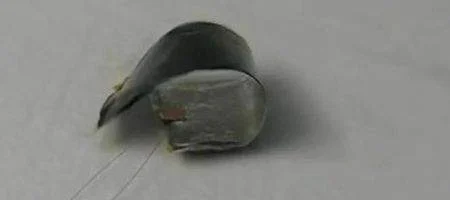MIT engineers say they’ve found a way to generate electricity just by drawing on the water vapor in the air.

They’ve created a new polymer film that changes its shape after absorbing tiny amounts of evaporated water, allowing it to repeatedly curl up and down.
There’s enough energy produced, says the team, to drive robotic limbs or power devices such as environmental sensors. Potential applications include large-scale, water-vapor-powered generators, or smaller generators to power wearable electronics.
“We are very excited about this new material, and we expect as we achieve higher efficiency in converting mechanical energy into electricity, this material will find even broader applications,” says Professor Robert Langer.
The new film is made from an interlocking network of two different polymers: polypyrrole, which forms a hard but flexible matrix and provides structural support; and polyol-borate, a soft gel that swells when it absorbs water.
The 20-micrometer-thick film harvests energy found in the water gradient between dry and water-rich environments. When it lies on a surface that contains even a small amount of moisture, the bottom layer absorbs evaporated water, forcing the film to curl away from the surface.
Once the bottom of the film is exposed to air, it quickly releases the moisture, somersaults forward, and starts to curl up again. As this cycle is repeated, the continuous motion converts the chemical energy of the water gradient into mechanical energy.
Such films could act as actuators as well as generators, with a 25-milligram film able to lift a load of glass slides 380 times its own weight, or transport a load of silver wires 10 times its own weight, by working as a potent water-powered ‘mini tractor’.
The mechanical energy generated by the material can be converted into electricity by coupling the polymer film with a piezoelectric material, converting mechanical stress to an electric charge. This system can generate an average power of 5.6 nanowatts, which can be stored in capacitors to power ultra-low-power microelectronic devices, such as temperature and humidity sensors.
The material can also be used to generate electricity on a larger scale, by harvesting energy from the environment – for example, while placed above a lake or river. It could be attached to clothing, allowing the delightful prospect of using your sweat to power physiological monitoring sensors.






